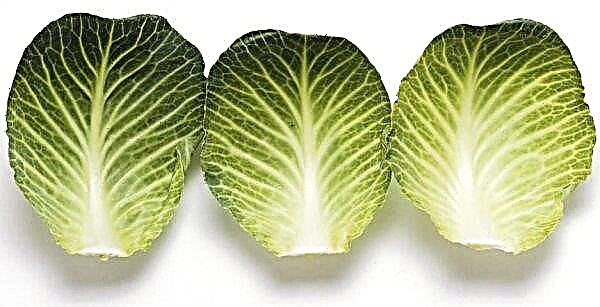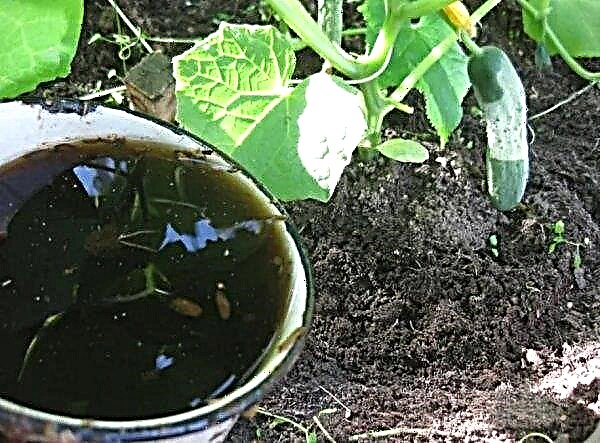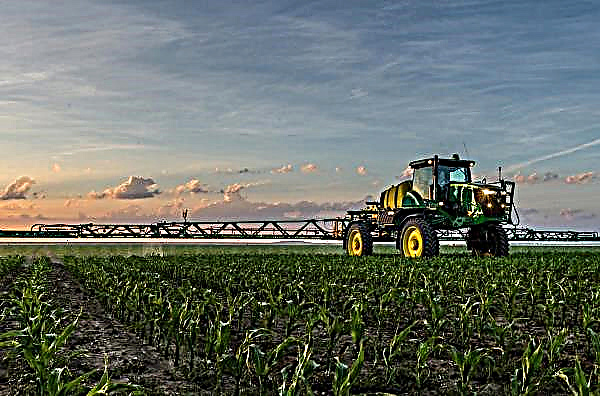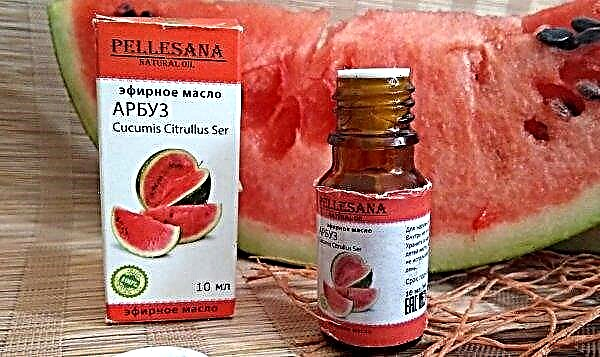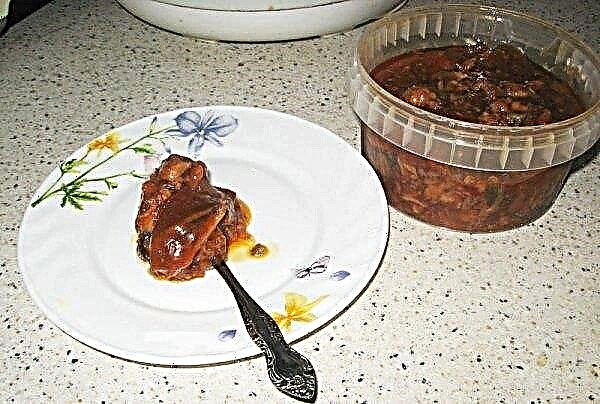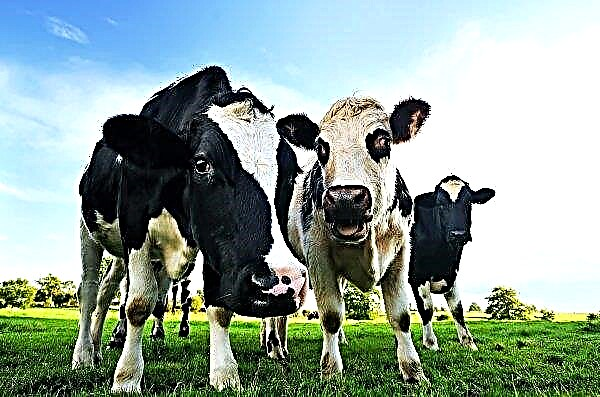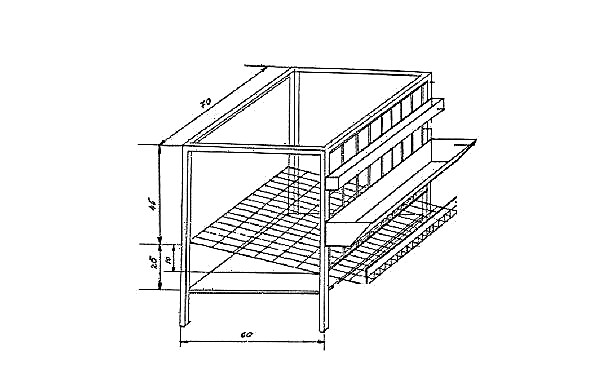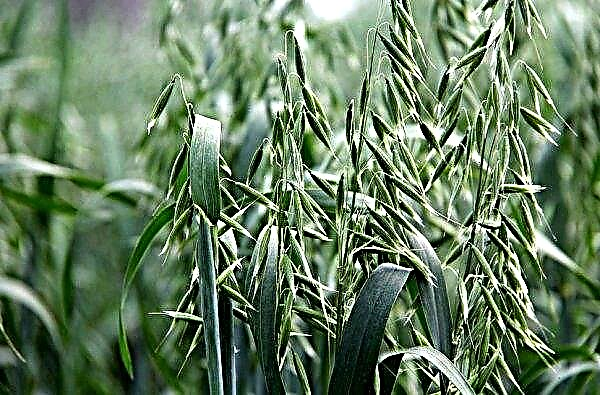Perhaps every lover of indoor plants is well known for the beauty of begonia. A huge number of varieties of this flower, sometimes completely different from each other, amazes the imagination and is able to satisfy every taste. In this review, we will talk about the basic requirements that begonia makes when growing it at home, and give some tips thanks to which it will feel no worse in the pot than in the native tropics.
Varieties of begonia ever flowering and their description
Begonia is a plant that can safely be called unique. Not only does the genus Begonia include, according to various sources, from a thousand to more than one and a half thousand species, they all differ from each other in such a number of criteria that in terms of their classification the botanists of the whole world cannot come to a consensus.  So, the plant is divided into different groups depending on:
So, the plant is divided into different groups depending on:
- external features - flowering and decorative foliage;
- kind of root system - tuberous, with a fibrous root, with superficial roots;
- trunk structure - grassy and shrubby;
- shoot development - creeping, erect, drooping and lying on the ground;
- withdrawal method - wild and hybrid.
Did you know? Begonia owes its name to Michel Begon Sr., the French commander of the colonies and navy, who carried out a scientific expedition to the Caribbean in the 80s of the 17th century, during which the botanist Charles Plumier, exploring the flora of the tropical island of Haiti, immediately discovered six varieties of an unknown plant and, describing in 1690 a new family, gave him a name in honor of his patron.
Today, wild representatives of the genus Begonia grow mainly on three continents: in South America (up to the territory of Mexico), in Asia (India, the Himalayas, Sri Lanka, the Malay archipelago), as well as in Africa (western tropical forests). As for hybrids, their growers are grown almost all over the world.
Photo gallery
Hybrid begonia varieties, called, thanks to their magnificent flowers, ever-flowering, it is customary to classify into three groups depending on one criterion - size.
Tall
This group includes varieties whose growth reaches 25 cm and above (the maximum height of a houseplant usually does not exceed 40 cm).
Among the most popular representatives of this group are:
| No. p / p | Grade name | Short description |
| 1 | Alba | Height - from 35 to 37 cm. The bush is loose and sprawling, the leaves are dark green in color. It blooms not very plentifully, up to 30 rather large white flowers (up to 4 cm in diameter). |
| 2 | Gustav Knaake | Height - from 27 to 28 cm. The bush is sprawling, the leaves are green with a characteristic red border. Blooming medium intensity, up to 55 flowers of saturated raspberry color (up to 5 cm in diameter). |
| 3 | Kate Teicher | Height - from 30 to 31 cm. The bush is spreading, the leaves are green with a red rim. The flowers are red, up to 65 pieces on one bush. The diameter of the flower is on average 3-4 cm. |
| 4 | Renaissance | Height - up to 40 cm. The bush is compact, leaves are bright green, shiny, have a beautiful heart shape with jagged edges. The flowers are large, about 4 cm in diameter, have a red-orange color and characteristic wavy edges; up to five dozen of them can bloom on the bush. |
| 5 | Double Red (terry red) | Height - from 20 to 30 cm. The bush is sprawling, leaves a magnificent bronze hue with carved edges. The flowers are large - up to 10 cm in diameter, bright red in color with delicate harvested ("terry") petals, have a strong sweetish aroma. |
Medium
It is customary to attribute to medium-sized species of evergreen begonia, the height of which ranges from 20 to 25 cm. These plants include, for example:
These plants include, for example:
| No. p / p | Grade name | Short description |
| 1 | Carmen | Height - from 24 to 25 cm. The bush is quite compact, brown leaves with the presence of blue. The flowering is plentiful, up to eight dozen small (2-3 cm in diameter) pink flowers. |
| 2 | Othello | Height - from 24 to 25 cm. The bush is well collected, the leaves are dark in color. The diameter of the flowers is 3-4 cm, their number with good care is simply huge. Color is bright red. |
| 3 | Lucifer | Height - about 20 cm. The bush is compact, the leaves are green with a red border. The flowers are bright red, rather large (up to 3.5 cm in diameter), but their number on the bush is not as large as that of the Othello variety. |
| 4 | Ambassador | Height - about 25 cm. The bush is compact, the leaves are glossy, bright green. Flowers with a diameter of up to 3 cm cover the upper part of the bush with a beautiful hat. The color can be of nine different types - white, red, pink with a red edging, as well as all kinds of shades of pink. |
| 5 | Bada bing | Height - from 20 to 25 cm. The bush is neat, but very lush. Leaves glossy texture saturated green. Large, up to 3 cm in diameter, flowers rise above the leaves. Color options - white, red, pink (most often red). Flowering is very plentiful. |
Undersized (dwarf)
Dwarf begonias are plants with a height of less than 20 cm (the smallest representatives of the species grow no more than 8 cm in height). Low-growing begonias include such varieties as:
Low-growing begonias include such varieties as:
| No. p / p | Grade name | Short description |
| 1 | Albert Martin | Height - from 14 to 15 cm. The bush is not sprawling, green leaves with a red edging. The flowers are small (no more than 2.5 cm in diameter), bright raspberry. Their amount on the bush with good care can be up to five dozen or more. |
| 2 | Bella | Height - about 19 cm. The bush is not sprawling, the leaves are green with red edges. It blooms with dark pink, rather large (up to 3 cm in diameter) flowers, more than one and a half hundred of them can bloom on one bush. |
| 3 | Linda | Height - no more than 8–9 cm. The bush is compact, the leaves are green with a red border traditional for begonia. Flowers reach 3 cm in diameter, have a delicate pink color, on one bush with good care about eighty flowers are formed. |
| 4 | Scarletta | Height - no more than 16 cm. The bush is not sprawling, the leaves are green, their edges are red. It blooms very plentifully, throwing out nearly one and a half hundreds of bright red flowers with a diameter of up to 3 cm. |
| 5 | Sheila | Height - no more than 16 cm. The bush is compact, the leaves are green with a red rim. The diameter of the flowers is up to 2.5 cm, their number on the bush is about eight dozen. The color is red, very bright. |
Planting and care at home
Evergreen begonia is very often used in landscape design, however, since this tropical plant cannot winter in the middle zone, it is grown in open ground as an annual. But as a houseplant, begonia can delight the eye with abundant flowering all year round - just create optimal conditions for it, which is not so difficult, and transplant it in a new pot in time, when it becomes cramped in the old plant.
Pot selection and planting
Like any other indoor plant, it is best to plant or transplant (transship) begonia in late winter - early spring, when the length of daylight begins to increase rapidly, and the flower wakes up after a period of winter dormancy.
The rapid and active development of a flower largely depends on the correct choice of pot. Not the least role in this sense is played by the variety (type of root system and size) of the plant, but, as a general rule, not very deep containers are better suited for begonias, since its roots are closer to the surface of the earth. For the same reason, the bush needs to have as much horizontal space as possible, that is, the pot should be wide enough.Important! Any houseplant purchased in a specialized store must be transplanted into a new pot with a complete replacement of the soil. The fact is that potted flowers are coming to outlets planted not in soil suitable for this species, but in a special nutrient substrate, which ensures good transportation and preservation of the "presentation" plantsHowever, as a permanent soil is completely unsuitable.
 However, too spacious a container is also not suitable for the plant. Many beginner gardeners make this mistake, believing that in this way the flower can not be transplanted for several years. In fact, planting houseplants in obviously large pots is the same as buying a child's outgrowth clothes: flowers in such conditions feel uncomfortable. Begonia, in particular, reacts to an excessively large pot with poor flowering: at best, the flowers will be small, and the flowering period will be short, at worst - the beauty will not bloom at all.
However, too spacious a container is also not suitable for the plant. Many beginner gardeners make this mistake, believing that in this way the flower can not be transplanted for several years. In fact, planting houseplants in obviously large pots is the same as buying a child's outgrowth clothes: flowers in such conditions feel uncomfortable. Begonia, in particular, reacts to an excessively large pot with poor flowering: at best, the flowers will be small, and the flowering period will be short, at worst - the beauty will not bloom at all.Important! The optimal diameter of the pot is the diameter of the root coma of the plant, plus 3-4 extra centimeters.
If the pot purchased in the store does not contain a drainage hole, it must be done so that excess water does not accumulate at the bottom. In addition, the lower watering (when water is poured directly into the pan), along with the upper (on an earthen lump) provides a more uniform saturation with moisture of the entire soil in the pot.
The material from which the pot is made is better to choose natural, because in plastic the soil does not have the ability to "breathe", which often leads to damage to the plant by fungal diseases. A good choice is clay or ceramics, but without a continuous layer of glaze.
Before backfilling the soil, it is necessary to put a thick, up to one third of the total volume, drainage layer in the pot (sand, fine gravel, expanded clay) - it will prevent the roots from coming into contact with stagnant water after heavy watering. A not very large amount of a previously prepared or acquired soil mixture, which needs to be formed as a knoll, is poured over the drainage layer. The root system of begonia is very carefully laid out on it, then the remaining part of the earth is gradually filled up from above, compacted well, and then again filled up until the point of growth of the begonia is directly flush with the ground.
A not very large amount of a previously prepared or acquired soil mixture, which needs to be formed as a knoll, is poured over the drainage layer. The root system of begonia is very carefully laid out on it, then the remaining part of the earth is gradually filled up from above, compacted well, and then again filled up until the point of growth of the begonia is directly flush with the ground.
Young begonias, especially undersized ones, can be placed in pots of several pieces, but in this case, you need to maintain sufficient distance between the bushes so that the plants do not interfere with each other and so that later they can be planted without damaging the root system.
An important point in creating optimal conditions for begonia is the choice of place for the pot. This plant has a rather "selfish" character: so that it pleases the owner with abundant flowering, it can not be placed in close proximity to other indoor flowersBegonia needs space and “personal space”.
Soil and top dressing
Since begonia is a very common indoor plant, soil suitable for it can always be bought in the same store where the flower itself was purchased (the product is called “Begonia. Nutritious soil”).  If the name of the plant is not indicated on the packaging, you should focus on a list of flowers that show the same soil requirements as begonia. This list, for example, includes:
If the name of the plant is not indicated on the packaging, you should focus on a list of flowers that show the same soil requirements as begonia. This list, for example, includes:
- balsamins;
- fuchsias;
- gloxinia;
- ivy;
- chlorophytums;
- sansevier;
- Gisneria
- pelargonium;
- pylaea.
 It is difficult to make such a soil at home, but if you wish, you can plant a begonia in a mixture of garden or leaf soil, humus and sand, taken in equal proportions. Another option is garden soil, peat, humus and sand in a ratio of 2: 1: 1: 1.
It is difficult to make such a soil at home, but if you wish, you can plant a begonia in a mixture of garden or leaf soil, humus and sand, taken in equal proportions. Another option is garden soil, peat, humus and sand in a ratio of 2: 1: 1: 1.With the right selection of soil during the first few months, the flower can not be fed (fertilizing the newly transplanted plant can cause a burn of the root system). Subsequently, every four weeks, along with irrigation, mineral fertilizers containing a full amount of potassium and phosphorus and a limited amount of nitrogen are applied to the flowerpot (this chemical element contributes to a set of green mass and, thus, reduces the flowering intensity).
Occasionally, a flower can also be fed with manganese and boron. A nutrient solution is prepared using 0.2 g of boric acid and 0.1 potassium permanganate (commonly known potassium permanganate) per liter of water.
Optimum humidity and temperature
The begonia is home to the tropics, so the plant loves warmth and high humidity. The main difficulty is that for “eternal flowering” these conditions must be maintained throughout the year. The ideal temperature for begonia is 18 ° C, the tolerance is three degrees down and two to four degrees up. The smaller the seasonal differences, the better flowering will give the plant.The optimum humidity in which begonia will feel comfortable is 60%. I must say that it is such an indicator that is considered optimal for a person, for household appliances, and for wooden furniture, therefore the “interests” of the indoor plant and the owners of the premises where it is located, in this case, coincide.
The ideal temperature for begonia is 18 ° C, the tolerance is three degrees down and two to four degrees up. The smaller the seasonal differences, the better flowering will give the plant.The optimum humidity in which begonia will feel comfortable is 60%. I must say that it is such an indicator that is considered optimal for a person, for household appliances, and for wooden furniture, therefore the “interests” of the indoor plant and the owners of the premises where it is located, in this case, coincide.
Did you know? During the heating season in urban apartments, the air is usually much drier than expected. You can verify this by conducting a simple experiment. Pour cold water into a glass and refrigerate it for several hours. Then place a glass of water in the middle of the room (not next to the heater) and observe its walls for five minutes. If water droplets appeared on the glass and did not dry after five minutes, or began to drain on the glass, it means that the room is quite humid, but if after this time the water has completely dried, the air in the room is too dry.
During the flowering period (that is, in fact, always), it is not necessary to spray begonia; from direct contact with water drops, unaesthetic dark spots appear on the flower petals. The same effect may occur on the leaves. Therefore, the necessary level of humidity should be provided using special devices for humidifying the air, and if this is not possible, by installing a container filled with water in the immediate vicinity of the flowerpot, or by placing the pot in a tray with moistened sand, gravel, expanded clay, moss, etc. .
Lighting
Begonia needs good lighting, but, like all inhabitants of the tropics, does not tolerate direct sunlight. Especially detrimental undistracted light affects the delicate flowers of the plant. For this reason, the flowerpot is best installed on the east or west side, and if there is too much light on the windowsill, the flower should be shaded with light-scattering materials (for example, curtains).
Pruning and transplanting
In principle, pruning is not a necessary measure in the care of begonias, however, this procedure can be used to give the bush a greater decorative effect. In particular, pruning is used for:
- removal of dried out, weakened or knocked out of the general "composition" of shoots;
- stimulating the development of new shoots;
- the formation of the bush (limiting the growth of the bush in height and encouraging its development to the side, this form for ever flowering plants looks more advantageous).
 Stimulating pruning is as follows. Long stems are not shortened, but shorter ones, on the contrary, are cut at a height of 4–5 cm from the ground, however, an equal number of leaves should be preserved on each cut shoot. Cropped shoots can be used as cuttings for the vegetative propagation of plants. At the same time, the upper stems are fixed with special clamps that block further growth and cause lateral division.
Stimulating pruning is as follows. Long stems are not shortened, but shorter ones, on the contrary, are cut at a height of 4–5 cm from the ground, however, an equal number of leaves should be preserved on each cut shoot. Cropped shoots can be used as cuttings for the vegetative propagation of plants. At the same time, the upper stems are fixed with special clamps that block further growth and cause lateral division.
Important! Wilted flowers always need to be cut, and along with the inflorescence.
As a rule, such a procedure is carried out in the spring, when the plant enters the phase of active growth. You need to cut the flower with a very sharp knife, ordinary scissors are not suitable for this purpose.
During the first two years of life, begonia should be transplanted annually, each time picking up a pot of a little (3-4 cm) larger diameter. So the plant will develop better and bloom more actively.
For transplanting, it is better to choose moments when flowering does not occur (has just ended) or loses its intensity, since for a flowering plant, transplanting is a lot of stress. Also, for easier transfer of the procedure, it is advisable to use the transshipment method, when the flower is removed from the old pot together with an earthen lump, without exposing the roots, and directly in this form it is placed in a larger container into which the drainage is pre-filled, after which it is poured and carefully tamped from above. fresh soil mixture. Plants older than three years are usually not transplanted, but simply replaced with younger ones. However, if an adult begonia continues to bloom actively, instead of transplanting, you can simply sprinkle a new layer of soil into the pot - this will extend the life of the flower without disturbing it.
Plants older than three years are usually not transplanted, but simply replaced with younger ones. However, if an adult begonia continues to bloom actively, instead of transplanting, you can simply sprinkle a new layer of soil into the pot - this will extend the life of the flower without disturbing it.
The period of rest and flowering
Typically, indoor plants after a period of active flowering go into a dormant phase, however, begonia is ever-flowering, justifying its name, can really bloom almost continuously. An exception to this rule is only those plant varieties that have a tuberous root system. By mid-autumn, watering such begonias should be gradually reduced; if the flowerpot was on the open veranda - bring it into the room and then, after about two weeks, stop watering the land completely. Usually, at this point, the flower dries and discards the entire green part, but if this does not happen, armed with a sharp knife, you should cut it under the root. Now the flowerpot needs to be wrapped in several layers of newspaper, placed in a dark place (it is good if it is cool enough, with a temperature of no more than 10-15 ° C), do not water and do not feed, leaving this in a state of complete rest until the end of winter.
Usually, at this point, the flower dries and discards the entire green part, but if this does not happen, armed with a sharp knife, you should cut it under the root. Now the flowerpot needs to be wrapped in several layers of newspaper, placed in a dark place (it is good if it is cool enough, with a temperature of no more than 10-15 ° C), do not water and do not feed, leaving this in a state of complete rest until the end of winter.
An alternative wintering option is to extract the tuber from the pot and store it in peat and even in the vegetable section of the refrigerator, but this method is more often used when growing evergreen begonias in the open ground.
Important! Young tuberous begonias (less than one year old) do not need wintering. Their growth is still too active, with the onset of cold weather it does not stop, so if such a plant is cut and stopped watering, it is likely to die. In winter, such flowers are better to simply transfer to a cooler, but sufficiently lit place and slightly limit their watering.
In relation to begonia varieties with a fibrous root system, watering and top dressing in the winter are limited only if the temperature and lighting in the room where the flower stands are very different from summer conditions. However, since it is equally warm in apartments and private houses in winter and summer, such flowers can do without a dormant phase.
Breeding methods
Traditionally begonia breeds in two ways - vegetative and seed. As the first option, cuttings are most often used (although it is also possible to grow a new plant from a leaf, and tuberous varieties also propagate by dividing the root).
Cuttings
This method is by far the easiest - moreover, it can be perfectly combined with stimulating pruning.
In an adult bush, a young (spring or summer) shoot is selected. With a sharp knife, it must be cut so that the resulting stalk is about 10 cm long and two to three pairs of leaves.
 Two options are now possible:
Two options are now possible:
- place the stalk in water for about one and a half to two months for rooting (it is better to add some kind of rooting agent to such water, it can be purchased at a flower or agricultural store);
- planted in the ground immediately - in this case, the cut must first be dried, for example, by dipping in grated charcoal.
When the stalk began to let out young shoots, it can be transplanted into a permanent pot as described above.
Video: Propagation of begonia by cuttings
Sowing seeds
Growing begonias from seeds is a much longer and troublesome business.
Important! The seed growing method is not suitable for hybrids with double flowers, since the young plants obtained in this way do not preserve the decorative properties of the mother bush.
Sowing is usually done at the end of winter:
- The soil mixture is placed in a pre-prepared container at approximately 2/3 of the box depth.
- Seeds are carefully laid out on top.
- From above they need only to be slightly sprinkled with a substrate, not allowing excessive deepening.
- Next, the container is tightened with a film and placed for germination. The conditions are the same as those used for rooting cuttings.
 A properly planted begonia can bloom in the first year.
A properly planted begonia can bloom in the first year.Pests and diseases
Indoor begonia is not a very capricious plant, and if good conditions are created for it, it rarely gets sick.
Among the pests that can infect a plant, first of all it should be named:
- nematode (gall or leaf);
- soft shield and false shield;
- greenhouse thrips;
- greenhouse whitefly;
- aphid greenhouse.
Did you know? On October 20, 1920, the German astronomer Karl Wilhelm Reinmouth, observing the starry sky from an observatory located on the Königstuhl hill in the city of Heidelberg, discovered a new asteroid in the Main Asteroid Belt and called it Begonia. This small celestial body revolves around the Sun, without crossing the Earth’s orbit, and makes a complete revolution in 2011 days, that is, in about five and a half years.
In addition to pests, begonias can also be threatened by various diseases, especially fungal ones. Unlike insects that can infect even a completely healthy plant, the development of pathogenic fungi is almost always promoted by improper care, in the first place - excess moisture in the ground or in the air. Below are the main diseases characteristic of begonia and their possible causes:
Below are the main diseases characteristic of begonia and their possible causes:
| Disease name | Signs | Possible reason |
| Powdery mildew | white spotted coating on the surface of the sheet plate | soil stagnation, insufficient watering |
| Bacterial spotting | oily blurry spots appear on the leaves, the leaves turn black, dry and fall off | pathogen entry from soil or from neighboring plants |
| Ring spotting | the presence of light green circles on the leaves | the pathogen (virus) can be introduced by nematodes from the soil or from neighboring plants |
| Gray rot (leaf) | gray-green fluffy coating on leaves and stems | high humidity combined with low temperature; surface spraying of leaves and flowers |
| Root rot | withering and drying leaves, dark stripes on the stem | watering with cold water; violation of the temperature regime (in both directions); excess fertilizer |
The first and main way to combat fungi and other pathogens is to adjust the living conditions so that the plant itself can cope with the disease. However, if the lesion is severe, the bush should be treated with a systemic fungicide (such as, for example, Bactofit, Vitaros, Gamair, etc.), after removing diseased leaves and shoots. If the diagnosis is made accurately, you can use directional drugs - say, Rayek is a proven remedy for powdery mildew, Glyocladin is good for root rot.
Important! Ring spotting, like most viral diseases, is not treated. The affected plant is destroyed along with the land in which it grew.
Finally, a very common question that arises in people who have acquired evergreen begonias is related to why the plant does not bloom (or blooms poorly, for a short time, not plentifully, drops flowers, etc.). The causes of this phenomenon are almost always associated with improper planting or violation of growing conditions.
The most common mistakes that begonia responds to by poor flowering include:
- too big pot (flowers are small, quickly fall off);
- increased humidity (flowering does not occur);
- low humidity (buds dry and fall);
- excess lighting, direct sunlight on the bush;
- overheating (buds dry);
- hypothermia (buds turn black);
- a sharp change in temperature or other conditions, for example, immediately after acquisition or transplantation (flowers and buds fall off).
 Those who like to grow flowers on their windowsill should definitely pay attention to begonia. This is almost the only plant that can bloom throughout the year, without requiring the creation of any special conditions for itself. The variety of begonia varieties and hybrids is so great, and it reproduces so simply that, focusing only on it, you can regularly update your home, each time filling it with new and new colors and their bizarre combinations.
Those who like to grow flowers on their windowsill should definitely pay attention to begonia. This is almost the only plant that can bloom throughout the year, without requiring the creation of any special conditions for itself. The variety of begonia varieties and hybrids is so great, and it reproduces so simply that, focusing only on it, you can regularly update your home, each time filling it with new and new colors and their bizarre combinations.

